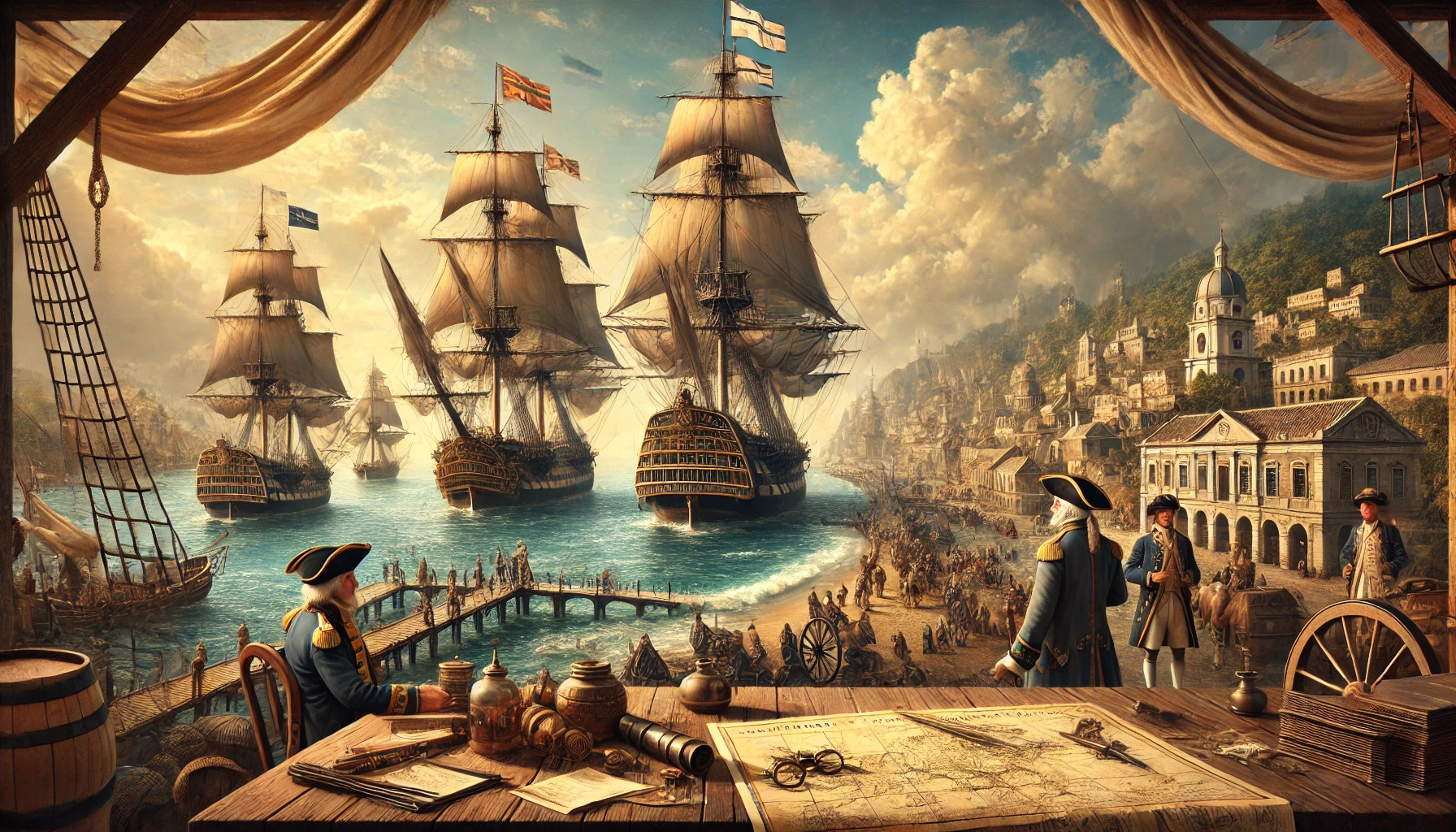Seafaring played a crucial role in the Age of Imperialism, enabling nations to expand their influence across the globe. Through maritime exploration, European powers established trade networks, colonized new lands, and sought valuable resources. This era not only changed the world map but also impacted cultures and economies in profound ways.
Navigating the oceans, explorers and sailors ventured into uncharted waters, driven by curiosity and ambition. Portugal and Spain were among the early leaders in this movement, paving the way for the expansion of other European powers. These journeys were about more than just exploration; they were the beginnings of extensive empires that shaped global history.
As nations competed for dominance, they recognized that control of maritime routes was key to their success. This competition for seafaring supremacy led to significant advancements in navigation and shipbuilding. The story of seafaring is not just about ships and sailors; it is about the interconnectedness of nations and the lasting effects of imperialism.
Navigational Advances and Their Impact
Navigational tools and techniques greatly influenced maritime travel during the Age of Imperialism. Improvements in navigation led to better sea journeys, which were crucial for exploration and trade.
The Compass and Astrolabe
The compass was a groundbreaking invention for sailors. It provided a reliable way to determine direction, even on cloudy days. This tool allowed explorers to traverse vast oceans with more confidence.
The astrolabe was another vital instrument. It helped navigators measure the angle of celestial bodies above the horizon. This capability enabled them to find their latitude, making long-distance travel safer and more accurate.
Together, these tools changed how mariners approached sea navigation. They marked a shift from relying solely on stars and landmarks to using devices that provided precise information.
Ship Design Improvements
Ship design underwent significant enhancements during this period. The development of the caravel, a small, fast ship, became popular among explorers. Its ability to sail against the wind allowed for more flexible routes.
Additionally, larger ships, like galleons, emerged. These vessels carried more cargo and crew, supporting long voyages and trade. They featured improved hull designs and stronger sails, which made traveling across oceans more feasible.
These advancements made exploration and colonization more successful. They allowed European powers to establish and maintain global trade networks.
Advances in Cartography
Maps became much more detailed and accurate during the Age of Imperialism. Cartographers began to utilize data gained from explorers’ travels to improve their maps. This effort helped sailors navigate treacherous waters more easily.
New techniques in map-making included using latitude and longitude lines for precise locations. This change made it simpler for navigators to find their way.
Moreover, the introduction of symbols and detailed coastal outlines improved ship navigation near land. With better maps, explorers felt more confident charting unknown territories. This led to increased exploration and the expansion of empires.
Economic Motivations for Seafaring
Seafaring played a crucial role in the economic strategies of empires during the Age of Imperialism. This section explores the significance of trade routes and goods as well as the influence of mercantilism and monopolies on maritime activities.
Trade Routes and Goods
Trade routes were vital for connecting various regions and expanding economies. Coastal cities became bustling trade hubs, exchanging goods like spices, textiles, and precious metals.
The demand for exotic goods created wealth for nations that controlled the sea lanes. British ships carried tea from China and sugar from the Caribbean, while Spanish galleons transported silver from the Americas.
These activities set the stage for international commerce and led to the establishment of networks that shaped global trade. Control of key trade routes meant access to valuable resources and profit for empires.
Mercantilism and Monopolies
Mercantilism drove countries to build powerful navies to protect their trade interests. This economic system encouraged nations to accumulate wealth through a favorable balance of trade and to seek monopolies over specific goods.
Colonial powers implemented laws to restrict trade, ensuring only their ships could carry certain products. For example, the Navigation Acts of 1651 required goods to be transported on British ships, limiting competition.
These monopolies allowed empires to dominate markets and maximize profits. As nations invested heavily in their maritime capabilities, seafaring became an essential tool for economic expansion and imperial power.
Cultural and Political Effects
Seafaring played a critical role in shaping cultures and political landscapes during the Age of Imperialism. The expansion of maritime empires led to significant changes in how societies interacted, governed, and shared knowledge.
Colonialism and Territorial Expansion
The rise of seafaring opened new territories for colonial powers. European nations sought resources to boost their economies. This led to the establishment of settlements that changed local societies.
Countries like Britain and Spain built vast empires by controlling key trade routes. They claimed lands that were rich in resources, often disregarding the existing cultures. This led to conflicts and the displacement of native populations.
Empires often imposed their laws and systems of governance. Many local customs and practices were suppressed. The effects of this expansion are still seen today in global politics.
The Spread of Ideas and Technologies
Maritime activities also facilitated the exchange of ideas and technologies. Navigation advancements allowed explorers to map seas and discover new lands. This sharing of knowledge transformed travel and trade.
As empires expanded, they introduced crops, tools, and inventions to new areas. For example, the introduction of the potato from the Americas to Europe changed diets and farming practices.
Cultural exchanges also took place. Art, religion, and language spread through these interactions. This blending of cultures created unique societies with both local and foreign influences.

